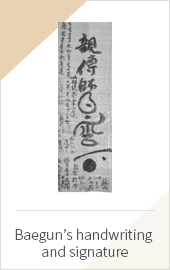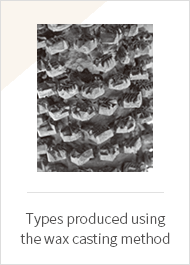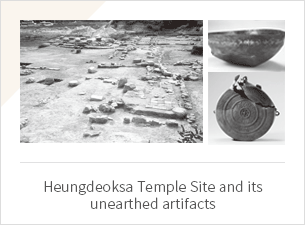- CoverRecto Verso
- InterleafRecto Verso
- Folio 2Recto Verso
- Folio 3Recto Verso
- Folio 4Recto Verso
- Folio 5Recto Verso
- Folio 6Recto Verso
- Folio 7Recto Verso
- Folio 8Recto Verso
- Folio 9Recto Verso
- Folio 10Recto Verso
- Folio 11Recto Verso
- Folio 12Recto Verso
- Folio 13Recto Verso
- Folio 14Recto Verso
- Folio 15Recto Verso
- Folio 16Recto Verso
- Folio 17Recto Verso
- Folio 18Recto Verso
- Folio 19Recto Verso
- Folio 20Recto Verso
- Folio 21Recto Verso
- Folio 22Recto Verso
- Folio 23Recto Verso
- Folio 24Recto Verso
- Folio 25Recto Verso
- Folio 26Recto Verso
- Folio 27Recto Verso
- Folio 28Recto Verso
- Folio 29Recto Verso
- Folio 30Recto Verso
- Folio 31Recto Verso
- Folio 32Recto Verso
- Folio 33Recto Verso
- Folio 34Recto Verso
- Folio 35Recto Verso
- Folio 36Recto Verso
- Folio 37Recto Verso
- Folio 38Recto Verso
- Folio 39Recto Verso
- Cover Recto
- Cover Verso
- Interleaf Recto
- Interleaf Verso
- Folio2 Recto
- Folio2 Verso
- Folio3 Recto
- Folio3 Verso
- Folio4 Recto
- Folio4 Verso
- Folio5 Recto
- Folio5 Verso
- Folio6 Recto
- Folio6 Verso
- Folio7 Recto
- Folio7 Verso
- Folio8 Recto
- Folio8 Verso
- Folio9 Recto
- Folio9 Verso
- Folio10 Recto
- Folio10 Verso
- Folio11 Recto
- Folio11 Verso
- Folio12 Recto
- Folio12 Verso
- Folio13 Recto
- Folio13 Verso
- Folio14 Recto
- Folio14 Verso
- Folio15 Recto
- Folio15 Verso
- Folio16 Recto
- Folio16 Verso
- Folio17 Recto
- Folio17 Verso
- Folio18 Recto
- Folio18 Verso
- Folio19 Recto
- Folio19 Verso
- Folio20 Recto
- Folio20 Verso
- Folio21 Recto
- Folio21 Verso
- Folio22 Recto
- Folio22 Verso
- Folio23 Recto
- Folio23 Verso
- Folio24 Recto
- Folio24 Verso
- Folio25 Recto
- Folio25 Verso
- Folio26 Recto
- Folio26 Verso
- Folio27 Recto
- Folio27 Verso
- Folio28 Recto
- Folio28 Verso
- Folio29 Recto
- Folio29 Verso
- Folio30 Recto
- Folio30 Verso
- Folio31 Recto
- Folio31 Verso
- Folio32 Recto
- Folio32 Verso
- Folio33 Recto
- Folio33 Verso
- Folio34 Recto
- Folio34 Verso
- Folio35 Recto
- Folio35 Verso
- Folio36 Recto
- Folio36 Verso
- Folio37 Recto
- Folio37 Verso
- Folio38 Recto
- Folio38 Verso
- Folio39 Recto
- Folio39 Verso
Folio 39 Recto
直指原文(Original Text of Jikji)解说内容用英语提供。
Click the number in the image to see details on composition analysis and explanation.

-
1
Only the second volume of Jikji has survived, with its first sheet (first two pages) missing. The cover page states the book’s title as “Jikji,” whereas the book’s final page features a different title “Baegun hwasangchorokbuljojikjisimcheyojeolgwonha.”

This lengthy title means “an anthology of teachings by the Buddha and eminent monks that can help achieve a Chan awakening, compiled by Monk Baegun Gyeonghan.”
Reverend Master Baegun Gyeonghan
Baegun Gyeonghan was born in Jeongeup, Jeollabuk-do Province in 1298.
After receiving his ordination, he visited monasteries across the country practicing Chan. In 1351, at the age of 50, he met Chan Master LiangbaoZhigong (梁寶誌公) and became his disciple. In 1365, following the recommendation of Seon Master NaongHyegeun (儺翁惠勤), Baegun became the abbot of Singwangsa Temple. In 1370, he became the head examiner for state examinations for monks Baegun Gyeonghan was born in Jeongeup, Jeollabuk-do Province in 1298. After receiving his ordination, he visited monasteries across the country practicing Chan. In 1351, at the age of 50, he met Chan Master LiangbaoZhigong (梁寶誌公) and became his disciple. In 1365, following the recommendation of Seon Master NaongHyegeun (儺翁惠勤), Baegun became the abbot of Singwangsa Temple. In 1370, he became the head examiner for state examinations for monks known as gonbuseon (功夫選), serving as the leader of Korean Buddhism.
In 1372, he published the two volumes of Jikji, a compilation of teachings by the Buddha and eminent monks in the Chan lineage. His other extant work is two volumes of Recorded Sayings (語錄). At the age of 77, he passed away at Chwiamsa Temple, Yeoju. - 2 This imprint suggests that Jikji was printed at Heungdeoksa Temple in Cheongjumok (present-day Cheongju) using movable metal type in 1377, the seventh year of Xuanguang (宣光).
- 3 Cheongju was so named in 940 (the 23rd year of King Taejo of Goryeo’s reign). In 983 (the 2nd year of King Seongjong’s reign), when a 12-mok administrative division system was established, it became Chungjumok (淸州牧). Later, in 1018 (the 9th year of Hyeonjong’s reign), the system was reduced to an eight-mok system, but Cheongjumok remained as an administrative hub in the Chungcheong region.
- 4
-
5

- 6 Character 指 (ji) is missing.




